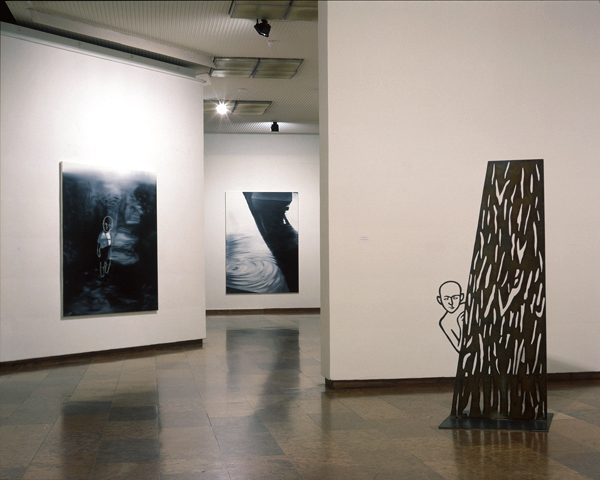An indivisible pictorial unity is achieved in László Fehér's paintings by combining objectivity with extreme subjectivity; cool aloofness with passionate commitment and the painful hollowness of banality with the solemn silence of the "great moments". László Fehér has created an impressive and deeply convincing oeuvre, which ranges from hard hyper-realism in the 1970s – unlike the American hard-focus-realism of phenomenological origins. This was not indifferent to the thematics after all, through his expressive and dramatic cycle in the early 1980s, to his realism combining reduced historical scenes in yellow and black with images of his personal past. From the mere trifles of everyday life, he creates compositions, which radiate timelessness and universality, and can serve as the paradigms of human existence, recording the greatness of historical moments on the one hand and the drama concealed in the unrepeatable scenes of private life on the other. In the past three years, his painting has become even more reduced and leaner in effects – naturally, only on the surface. Behind the sparing use of painterly devices there is not only an enormous technical virtuosity – enabling him to create the illusion of simplicity and explaining his sound judgment with regard to the selection of the scenes and the implementation of unnoticeable compositional changes. Convincing the viewers that "life itself created the scenes" – but also an ethos: responsibility for his decisions, the power and the determination to represent things in certain light and the inner motivation to show up himself. László Fehér’s art is an ethically deeply committed one, in which the realism of the motifs is not merely an aesthetical program and a display of technical virtuosity, but a gesture of emphasis and selection, of hierarchy and confrontation. László Fehér deliberately chooses motifs and scenes – or essences taken from real life – in which the existential experience and the aspects of life's fundamental issues manifest themselves in forms, which are simple and closed, yet mysterious. Suddenly, the fleeting moments and the transitoriness of everyday life, all return into a timeless experience outside the context of history, without nevertheless becoming abstract in the historical sense. We should see in each painting the metaphor of disturbing questions and of anxiety. At the same time, however, we should also discover in them a kind of committed interest, sympathy and even a quest for hope, by way of which Fehér tries to provide us with values, emotional and moral alike. This applies not only to some transcendental meaning and faith, but even more importantly to the attitude manifested in Fehér's paintings. It is not Fehér's intention to conjure up illusions; for him, human existence above all means loneliness, individual responsibility and individual decisions, the weight of which we cannot share. Yet, his world is not a pessimistic one, as he views history as a paradigm: a "useful" and intelligible example; in this way, the historical events, together with the emotions, conflicts and decisions recoverable from images of the past, also apply to us, the viewers of the paintings. ln the loneliness of existence, the paintings provide the means of communication: the panting has a function. It is under the aegis of this ars poetica that Fehér creates paintings – that is to say, reality.

